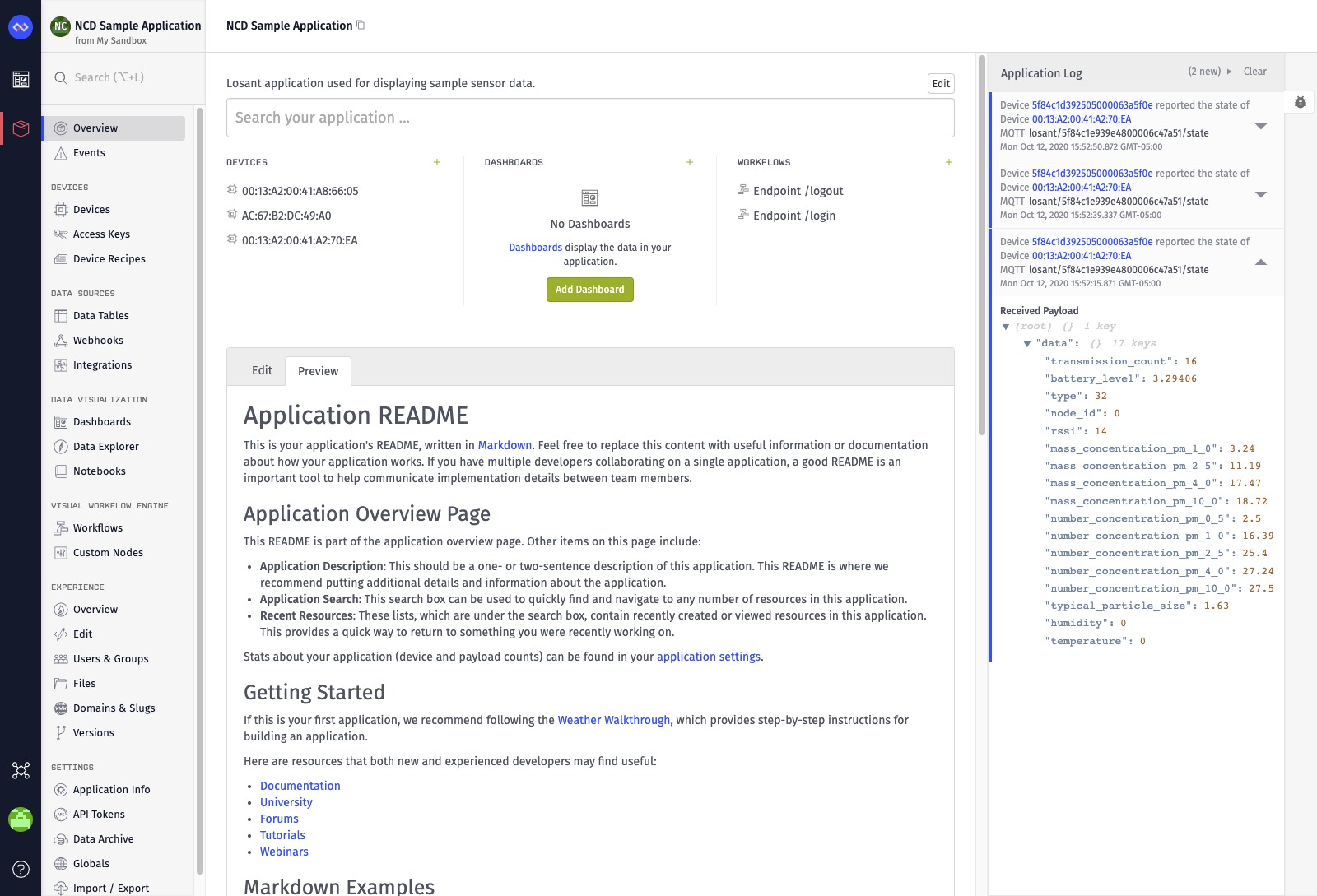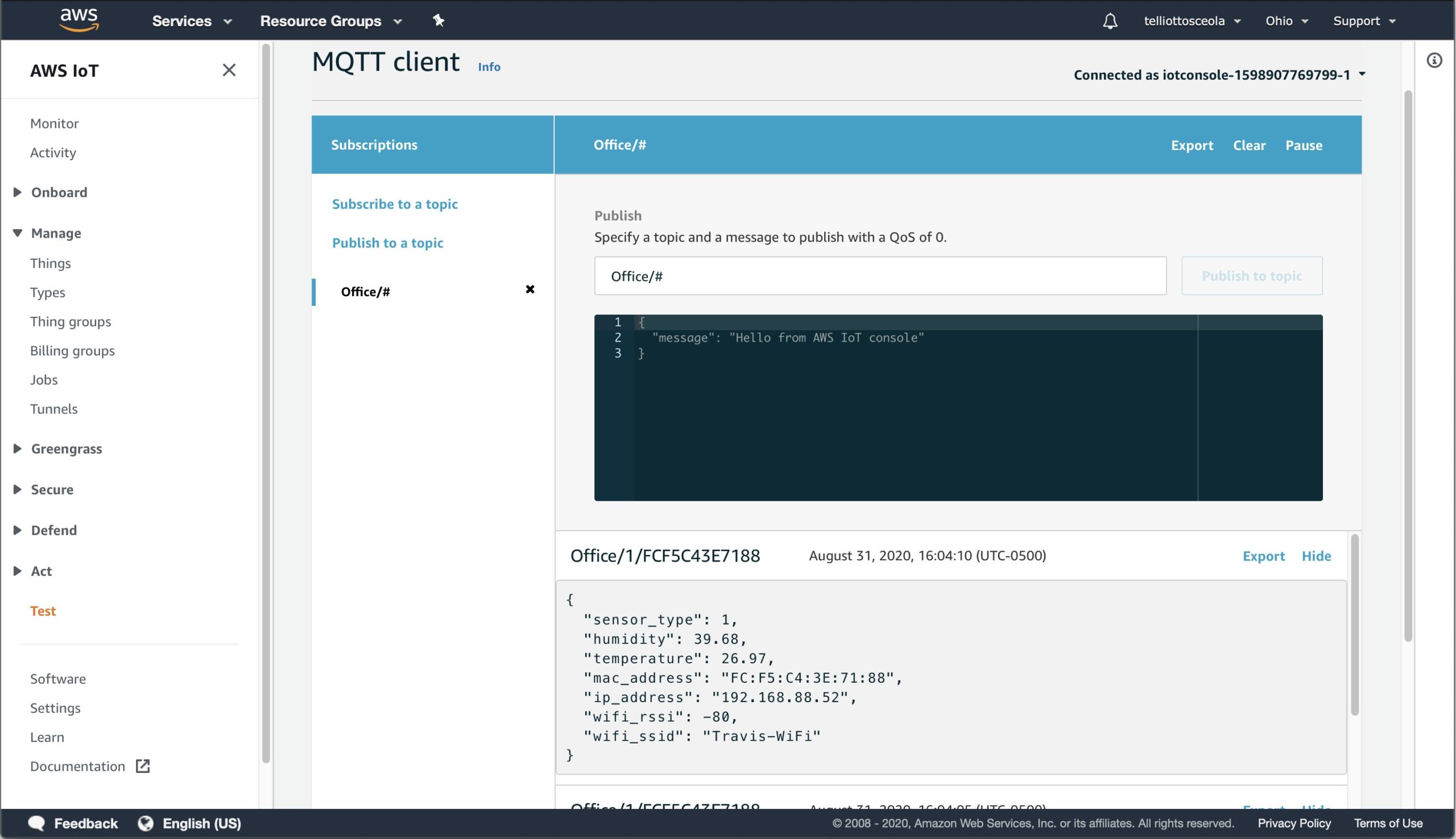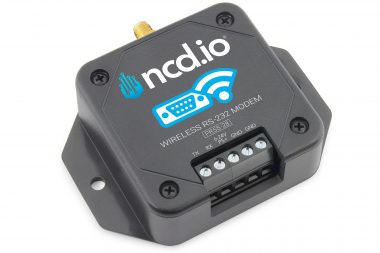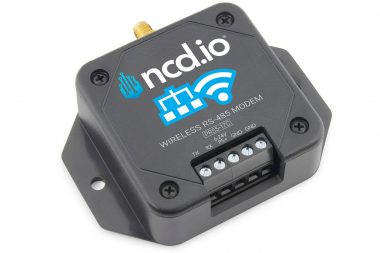NCD Modems VS. Gateways
A sensor collects the data but leaves the decision of where to transmit the data up to the user. Therefore, thanks to the constant innovation of IoT, the user has numerous ways to collect, store, and analyze the data they receive from their sensor. This guide will discuss the difference between a modem and a gateway, as well as suggest several options for both categories that we offer here at NCD.
Do I Need a Modem or a Gateway?
Your sensor has to have a place to send data so that the user can access it. That data can be transmitted either Remotely via a Gateway or Locally via a Modem. The data is then accessible in a way that is entirely dependent on which product you decide to use.
IoT Sensor Gateways are used to translate data from sensors into human-readable values and post the results on common cloud platforms such as Amazon®, Azure®, Losant®, and MQTT using WiFi for communications.
Modems on the other hand are used to transfer raw sensor data into different communication formats such as WiFi, Bluetooth, USB, RS-485, and MQTT. Please note that a MQTT Gateway is different from a MQTT Modem. A MQTT Gateway is preferred for most users, as it handles sensor translation for you. MQTT Modems do not translate data, they send the raw sensor data to the MQTT broker for parsing on the server.
Learn More about the Difference Between Gateways and Modems Here:
Send IoT Sensor Data Anywhere and EVERYWHERE!
Whether you need IoT sensor data on a desktop computer, an IoT cloud platform, or an embedded platform, we have you covered. NCD IoT sensors broadcast data, so data handling is very easy, expandable, and versatile. Send IoT sensor data to Gateways when you want to talk directly to IoT cloud platforms. Send IoT Sensor data to Modems when you want to talk to local computers.
Of course you can always send data to both gateways and modems simultaneously, so you always have access to your sensor data locally and remotely. Use multiple Gateways when you need data redundancy or if you need to send sensor data to multiple IoT cloud platforms.
Organize Your IoT Sensors for Large Installations
IoT Sensor Clusters are also possible. You can build a cluster of IoT sensors on every floor of a high-rise building, sending data to gateways and modems on each floor. Clustering makes it possible to keep your IoT sensor data separated for easier management. Each Gateway and Modem can be configured to listen to a different cluster of IoT sensors. Because NCD devices support thousands of clusters, expanding your IoT sensor network is virtually limitless.
Below we have provided a list of Gateways and Modems that NCD has to offer. Review each product throughout this guide to choose which option best suits you.
A) Gateways for NCD IoT Sensors:
Gateways are ideal if you want to be able to access your data remotely from the cloud. Using a gateway, your data is automatically transmitted from the sensor to the gateway. The data is then transmitted to common cloud platforms which we have conveniently listed below along with links to some of our products. Each cloud platform (or protocol such as MQTT) has a different interface and allows for different levels of customization of your data and how it is displayed to you. If you would like to be able to access your data remotely using a mobile device or laptop, gateways are the best option for you. Visualize how you want to access your data and check out each platform and/or protocol listed below.
Both Modems and Gateways offer long range wireless communications up to 2-Miles line-of-sight. Modems and Gateways may also be used in a Wireless Mesh network to “Hop” data across the wireless network to cover longer distances. Both Modems and Gateways may be grouped into separate networks on each floor of a high-rise building without interference between floors.
1. Send IoT Sensor Data to Ubidots
2. Send IoT Sensor Data to Microsoft® Azure® IoT
Collect IoT Sensor Data up to Two Miles Away and send your data to Microsoft® Azure® using the NCD Micro Gateway for Connection to Azure.
The Micro Gateway for Microsoft® Azure® reports all incoming IoT sensor telemetry as real-world values to Microsoft® Azure® through the connected Device Twin, and/or Device to Cloud Messages.
Setup could not be easier. The NCD Micro Gateway uses SoftAP and includes embedded web pages for configuration. Simply connect your WiFi capable computer to the NCD Micro Gateway Access Point and the Configuration Pages will appear. All you need is an Azure® Device Connection String to register this device to your Azure® account and a WiFi network with internet connectivity.
3. Send IoT Sensor Data to Losant
Collect IoT Sensor Data up to Two Miles Away and send your data to Losant using the NCD Micro Gateway. Leverage the power of the Losant Flow Builder to build a stunning dashboard that displays graphs of sensor telemetry over time.
The NCD Micro Gateway for Losant automatically provisions the gateway on the Losant Cloud and registers all IoT sensors as children of the gateway. Watch IoT Sensor data arrive on the Losant cloud with minimal setup time.
Setup could not be easier. The NCD Micro Gateway uses SoftAP and includes embedded web pages for configuration. Simply connect your WiFi capable computer to the NCD Micro Gateway Access Point and the Configuration Pages will appear. All you need are Losant connection credentials (Application ID and Application Token) and a WiFi network with internet connectivity.
Losant is an Official Partner of National Control Devices, Learn More about Losant Here.
4. Send IoT Sensor Data to Amazon® AWS® IoT
Collect IoT Sensor Data up to Two Miles Away and send your data to Amazon® AWS® IoT using the NCD Micro Gateway for Amazon AWS. Leverage the power of the Amazon® AWS® IoT to connect to the complete ecosystem of NCD IoT Wireless Sensors. The NCD Micro Gateway for Amazon® AWS® automatically provisions the gateway on the Amazon® AWS® Cloud and registers all IoT sensors as children of the gateway. Watch IoT Sensor data arrive on the Amazon® AWS® cloud with minimal setup time.
Setup could not be easier. The NCD Micro Gateway uses SoftAP and includes embedded web pages for configuration. Simply connect your WiFi capable computer to the NCD Micro Gateway Access Point and the Configuration Pages will appear. All you need are Amazon® AWS® connection credentials and a WiFi network with internet connectivity.
5. Send IoT Sensor Data to your MQTT Broker
Collect IoT Sensor Data up to Two Miles Away and send your data to your own MQTT broker using the NCD Micro Gateway for MQTT. Build your own cloud using the complete ecosystem of NCD IoT Wireless Sensors. The NCD Micro Gateway for MQTT sends JSON strings in human-readable values for easy integration into your own dedicated cloud applications. Build your own MQTT Broker or use Ubidots for displaying tiles of NCD IoT Sensor Data in just a few minutes!
Setup could not be easier. The NCD Micro Gateway uses SoftAP and includes embedded web pages for configuration. Simply connect your WiFi capable computer to the NCD Micro Gateway Access Point and the Configuration Pages will appear. All you need are MQTT credentials and a WiFi network with internet connectivity.
B) Modems for NCD IoT Sensors:
Modems are ideal for communicating to localized computers, servers, and embedded systems. The main purpose of a modem is to convert data from Wireless Sensors and endNode controllers into standard hardware communication formats such as USB Virtual COM Port, Bluetooth Virtual COM Port, WiFi TCP, WiFi MQTT, Ethernet TCP, RS-232, and RS-485. Multiple modems may be used simultaneously, so you are not limited to making a single choice. Add more modems as needed to cover larger areas or explore other communication technologies.
Both Modems and Gateways offer long range wireless communications up to 2-Miles line-of-sight. Modems and Gateways may also be used in a Wireless Mesh network to “Hop” data across the wireless network to cover longer distances. Both Modems and Gateways may be grouped into separate networks on each floor of a high-rise building without interference between floors.
Ways to visualize and analyze sensor data from a Modem:
1. Send IoT Sensor Data to Alpha Station
We Developed Alpha Station using Visual Studio to demonstrate how IoT sensor data can be received and converted to real-world values. Alpha Station allows you to view and set basic configuration settings of remote sensors up to 2 miles away.
Alpha Station supports our Wireless USB Modem, our Mega Modem, and our Wireless Ethernet Modem. The source code and run-time application is available for download on our web site at https://ncd.io/alpha.
2. Send IoT Sensor Data to Node-RED
We Developed a complete set of Drivers for Node-RED, so you can build your own flows and dashboards to help get you connected. Send NCD IoT sensor data to Node-RED and use flows to build logic operations to send alerts or turn things on or off. Combining Node-RED with NCD IoT sensors gives you limitless power to monitor, control, and visualize data locally and remotely.
The Node-RED Flow Builder is powerful, allowing you to build complex graphs and dashboards in minutes. Node-RED may also be used for advanced Gateway applications. Send data to your favorite IoT Cloud service such as MQTT, Losant, Microsoft® Azure®, or Amazon® AWS®. Since Node-RED runs on a local computer, a USB, RS-232, Ethernet or Mega Modem is required.
NCD Node-RED Libraries are always expanding, you can read about how to integrate our sensor into Node-RED Here.
3. Send IoT Sensor Data to LabVIEW®
Configure & Test IoT Sensors with LabVIEW®
We Developed a complete set of tutorials for working with NCD IoT Sensors using LabVIEW®. Use LabVIEW® to configure advanced sensor settings or to graph incoming sensor data. Monitor the battery level of remote sensors and watch sensor data flow over time.
We will be adding source code for LabVIEW® in the future, but for now, please contact us if you have a urgent need for source code. Since LabVIEW® runs on a local computer, a USB, RS-232, Ethernet or Mega Modem is required.
Data Logging
Using our LabView software, data logging from a single sensor is also possible. Simply run the software and watch the graph fill with data over time. Export the data into comma delimited tables for use in Excel or into other data analysis tools.
Logging data from multiple sensors simultaneously is not supported at this time in our software, but can be accomplished using Losant or Azure web services.




















